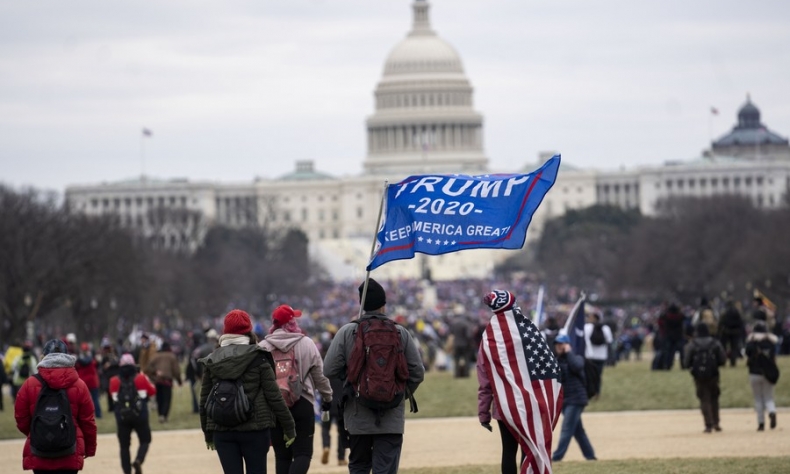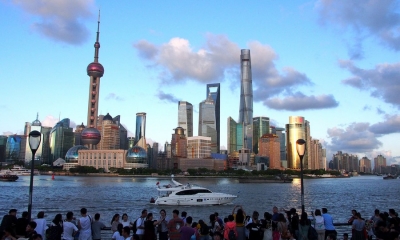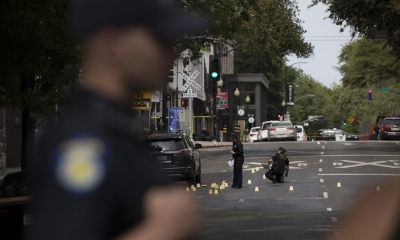Trump Is Merely a Symptom Not Cause of America’s Problems

In many ways, America’s problems are only just beginning, and the Biden administration is going to be a bumpy ride.
The world stood astounded at the scenes in Washington D.C. last week after a mob of pro-Trump supporters stormed the U.S. Capitol building and attempted to block Congress from certifying the result of last November’s presidential election when Joe Biden defeated Donald Trump.
Although the demonstrators did not get very far, there was sporadic violence leaving five dead including one police officer.
The unrest came after two months of the White House incumbent outright denying the election outcome and refusing to concede, spreading unverified allegations of voter fraud. Only after an outpouring of public condemnation and grief over the events on Capitol Hill did he finally concede on Thursday evening.
However, the damage is already done. Trump has hurled a sledgehammer at the American political system and in the process damaged its legitimacy. He leaves behind a chaotic and destructive legacy, and has tarnished America’s reputation on the global stage.
The incoming Biden administration will be a refreshing change but also a relief; however, to assume that all the problems created by Trump or the larger issues at stake in American society will simply disappear is naïve.
The White House incumbent is not specifically the problem, but a symptom of a wider set of problems, a series of social and economic upheavals in the United States emerging in the 21st century. The United States is so deeply divided, and identity shifts are creating political unrest. The departure of Trump is not the end of the problems, rather the beginning.
The United States is a vast country, covering the third largest area on Earth and a population over 300 million sprawling across 50 states. It is also one of the most diverse countries on the planet, described traditionally as a “melting pot” of multiple ethnicities but also in its territorial expanse enormous variations in geography, climate and local heritage.
The Italian and Irish branded hub of New York City has little in common with the uptight protestant culture of Alabama, and nor can the green scenes of Boston be comparable to the open plains of Kansas. Yet this is still America; for all its variations it is a single country, but with many contesting definitions as to what is truly “American.”
And herein lies the problem. The United States is beset by difficulties as very different interpretations of what this country means are increasing, owing to a society that is not harmonious, and perceiving each other as a threat.
Globalization, neoliberalism and economic inequalities have led to enormous social shifts in America that have threatened “traditional identities” and the natural “way of life,” displacing certain groups in the country who increasingly feel “left behind” and have become indifferent to politics, and are even angry.
Of course, these divisions have always been there, but something has brought them to the forefront and made them more relevant than ever, creating a steady collapse of the center ground into a more polarized and bitter political environment.
Three events should be looked at to access these changes, which sowed the seeds of Trump’s rise: First, the impact of the Obama administration. Second, the 2008 global financial crisis. Third, the growth of the social media era.
First of all, what might be described as the “Obama effect” was a mighty social turning point in America. Obama was the most liberal president the country had seen since Kennedy. He was the first Democrat since JFK that did not hail from the deep South. He emboldened a wave of “youth energy” drawing from America’s young, liberal and urban populations, and in driving forwards manifold changes creating insecurity in more Conservative American constituencies rejecting change out of hand.
This of course, went hand in hand with a poor economic outlook following the 2008 financial crisis, which exacerbated the differences between rich and poor. “Blue collar” communities were penalized by austerity, found little support from the government and in turn had seen neoliberalism deplete America’s industry.
There was insecurity in terms of identity in America, but also insecurity in economic status, too. This combined with the rise of social media culture in the 2010s that saw conspiracy theories proliferate in America and politics become more engaging, more divisive and more contentious than ever before.
Conspiracy theorists found their views were now acceptable to millions, and Obama was portrayed increasingly as a globalist who plotted to sell out America and undermine its identity. It all encompassed into a broader Conservative backlash against the legacy of his administration, or in other words a growing clash between America’s urban middle classes, secure and confident, and its rural, Conservative and blue-collar communities.
And thus, out of this gaping rift came Donald Trump, a man who rose to power by appealing to the insecurities of millions and with the ability to sell a nostalgic vision of a world that had long since passed people by.
Under the mantra of “Make America Great Again,” Trump converted the Republican Party from a bastion of fiscal Conservatism towards a working-class economic nationalism. He vowed to fight immigration, dismantle the Obama legacy and scapegoated the country’s economic situation as a zero-sum trade antagonism against China.
His deriding of the mainstream media and the political elite found widespread appeal, and thus he constructed an alternative reality around himself and his bombastic approach to the country’s divisions.
Now, four years later, we reach the end of his tenure and it should be no surprise to anyone that it has ended this way. Yet, what will surprise people is that this chaos and these divides will long outlive him. Trump will leave in two weeks, but his legacy is here to stay. The chorus of furious and angry individuals that he has whipped up and weaponized, even to the point of attempting to discredit an election, remain.
Those who sacked the Capitol may be a small minority, but polling finds 45% of Republican voters agree with what happened, and 56% of all voters, in fact, believe that election fraud took place which influenced the result. Despite the fanfare of condemnation, Trump’s theories and sentiments are not as marginal as one might assume. In many ways, America’s problems are only just beginning, and the Biden administration is going to be a bumpy ride.
 Facebook
Facebook
 Twitter
Twitter
 Linkedin
Linkedin
 Google +
Google +







